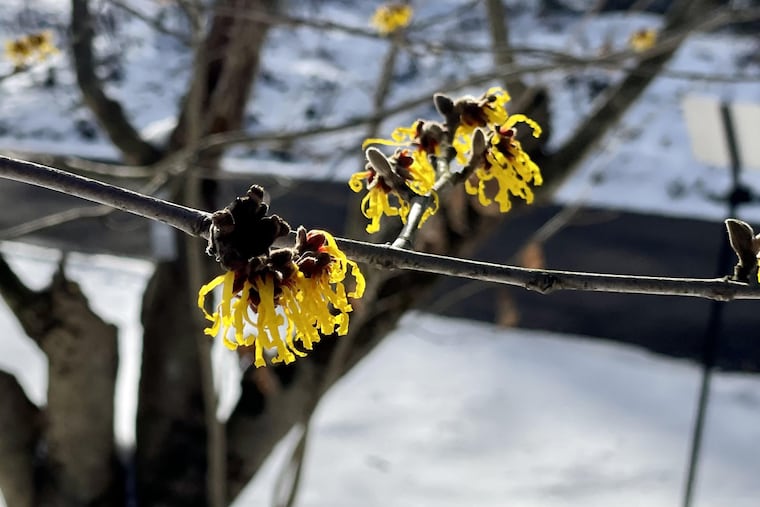What is witch hazel?
People apply the over-the-counter remedy to their skin for a variety of problems, including itching, inflammation, insect bites, bruises and minor burns, varicose veins, and hemorrhoids.

The Morris Arboretum in Chestnut Hill has one of the country’s largest collections of witch hazel, which are rugged winter-flowering shrubs that can grow as tall as small trees.
But what is witch hazel? Here’s what to know:
» READ MORE: Witch hazel is blossoming at Morris Arboretum on land protected nearly a century ago
How is witch hazel used?
Many people associate witch hazel with an astringent lotion, made from its bark and leaves. People apply the over-the-counter remedy to their skin for a variety of problems, including itching, inflammation, insect bites, bruises and minor burns, varicose veins, and hemorrhoids.
Where does the name witch hazel come from?
The witch in the name is generally believed to have originated from the medieval use of the flexible branches as divining rods. Witch hazel supposedly would bend — wych — in the direction of subsurface water.
Hazel likely became incorporated into the shrub’s common name because of their resemblance to hazelnut branches, which were also used as divining rods. Botanically, they’re not related.
How can I identify the plant?
American witch hazel is a shrub or small tree with arching branches generally growing as a multi-stemmed clump reaching heights up to 30 feet and widths up to 20 feet. Its blooms are yellow. Other cultivars come in shades of red and orange.
Witch hazels bloom in winter “when the temperature is just right, and their petals unfurl like those little streamers from horns you blow on New Year’s Eve. The petals unroll and release fragrance,” said Vincent Marrocco, Morris Arboretum’s director of horticulture.
In the autumn, witch hazels make a noise when releasing their seeds, which can land as far as 20 feet away. The popping sound may have suggested witchcraft to the superstitious, according to Rich Clark, a Morris Arboretum tour guide.